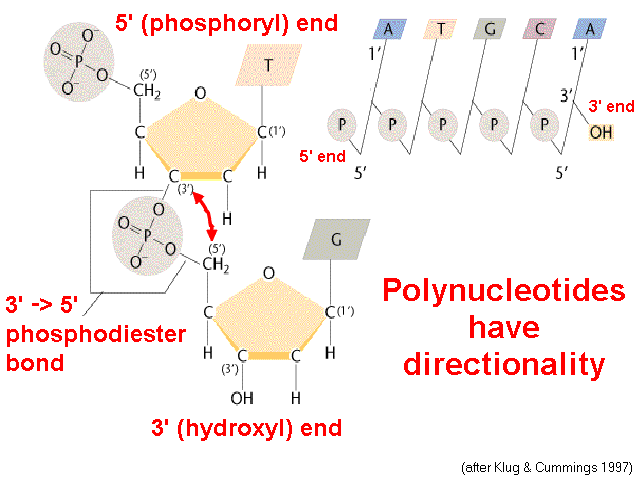
Polynucleotides
have directionality !
Adjacent
nucleotides in a single strand of DNA
(polynucleotide) are joined by a phosphodiester
bond between their 3' and 5'
carbons. (Recall that an ester bond is R - O - R:
the bond here is C - O - P - O - C). This means that
the respective 5' and 3' carbons are exposed
at either end of the polynucleotide, which are therefore
called the 5'
end and the 3'
end. These are also called the phosphoryl and hydroxyl ends,
respectively, because of the chemical groups typically found
at those ends.
A
polynucleotide therefore has directionality: the
two ends of the molecule have very different biochemical
properties, and behave very differently in molecular genetic
processes. It is therefore critical to recognize which
end is which.
A detailed
understanding of this figure is critical to
understanding molecular biology !!!